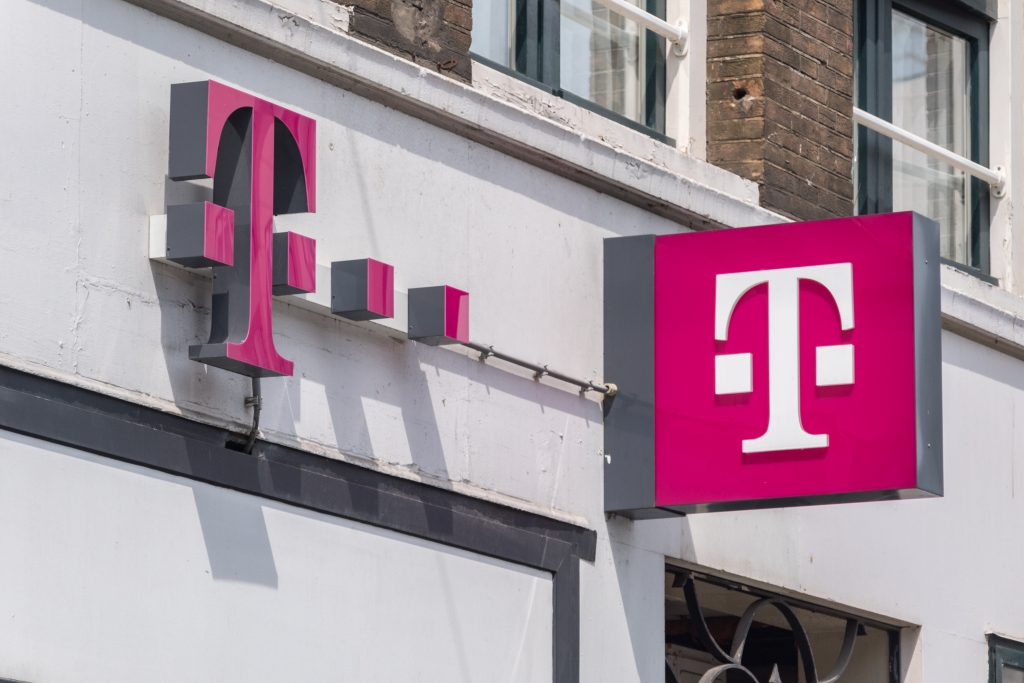“Given the very high stakes involved, an analysis of all relevant considerations should be undertaken prior to deciding whether litigation to enforce the intellectual property rights makes sense.”
Deciding whether or not to enforce one’s intellectual property rights is a significant decision for any business (or individual). Litigation in general tends to be an expensive proposition and intellectual property litigation ranks toward the top with regard to average cost. While the average total cost of U.S. trademark infringement and copyright infringement litigation varies depending on the nature of the case and the stakes involved, such costs (i.e., attorneys’ fees and third-party costs) average in the $300,000-$500,000 range. Patent infringement litigation is typically even more expensive. Intellectual property enforcement decisions therefore must be made with care, taking into consideration all relevant legal, financial, and other business considerations. This article discusses the considerations affecting intellectual property enforcement decisions through the prism of two examples: T-Mobile’s trademark rights in the color magenta and the very popular Baby Yoda GIFs that seem to be everywhere online. Both companies recently experienced considerable backlash when IP enforcement of these rights went wrong.
T-Mobile’s Magenta Trademark
A color alone may be the subject of trademark protection. In order to acquire trademark rights in a color, the color must function as a source identifier among consumers when used in connection with the specific goods/services involved and not in a strictly decorative capacity. A specific color alone has been held to not be inherently distinctive but to nonetheless be capable of distinguishing as to source upon acquiring secondary meaning through continuous use. The color must also not be serving a functional role in order to be protectable. A color alone, therefore, may be protectable as a trademark when used in connection with specific goods/services once it has acquired secondary meaning; in other words, once it can be established that consumers associate use of that color with the would-be trademark owner’s goods/services. In determining whether secondary meaning has been established, courts examine the following factors:
(1) the length and manner of use of the mark;
(2) the volume of sales;
(3) the amount and manner of advertising;
(4) unsolicited media coverage of the product together with the mark;
(5) consumer-survey evidence;
(6) direct consumer testimony; and
(7) attempts to copy the mark.
With regard to the length of use of the mark, five years of substantially exclusive and continuous use of a mark may constitute prima facie evidence that the mark has acquired secondary meaning.
 T-Mobile has successfully secured registration on the Supplemental Register of the color magenta alone when used in connection with telecommunications equipment. This registration was secured back in 2007. Further, the U.S. District Court for the Southern District of Texas expressed the opinion in 2014, in analyzing and granting T-Mobile’s motion for preliminary injunction brought against AIO Wireless, that T-Mobile was likely to be able to prove that it had established the requisite secondary meaning for the color magenta when used in connection with T-Mobile’s sales of wireless telecommunications services and products. See T-Mobile US, Inc. v. AIO Wireless LLC, 991 F.Supp.2d 888, 908 (S.D. Tex. 2014). T-Mobile, therefore, for all intents and purposes, appears to have secured rights in the color magenta alone, when used in connection with wireless telecommunications products and services.
T-Mobile has successfully secured registration on the Supplemental Register of the color magenta alone when used in connection with telecommunications equipment. This registration was secured back in 2007. Further, the U.S. District Court for the Southern District of Texas expressed the opinion in 2014, in analyzing and granting T-Mobile’s motion for preliminary injunction brought against AIO Wireless, that T-Mobile was likely to be able to prove that it had established the requisite secondary meaning for the color magenta when used in connection with T-Mobile’s sales of wireless telecommunications services and products. See T-Mobile US, Inc. v. AIO Wireless LLC, 991 F.Supp.2d 888, 908 (S.D. Tex. 2014). T-Mobile, therefore, for all intents and purposes, appears to have secured rights in the color magenta alone, when used in connection with wireless telecommunications products and services.
Baby Yoda
A GIF (acronym for Graphics Interchange Format) is an animated image file. GIFs are ubiquitous online, including on social media. GIFs have in recent years become a favored method of communication among younger people in particular. Giphy is a web site where users can download a wide array of GIFs. Baby Yoda is a character made popular on the Disney+ television series “The Mandalorian”; since Disney’s introduction of the character, Baby Yoda has been the subject of a disproportionate number of GIFs. Giphy recently took down the very popular Baby Yoda GIFs due to concerns emanating from Disney’s ownership of the copyright covering Baby Yoda. Giphy, however, later reinstated the Baby Yoda GIFs on its site. It is not clear whether Giphy’s removal of the Baby Yoda GIFs had initially been preemptive or based upon demands from Disney.
“Fair use” is an affirmative defense to a charge of copyright infringement. Courts consider the following factors when analyzing a fair use defense: (1) the purpose and character of the use, including whether the use is for commercial purposes or not; (2) the nature of the copyrighted work; (3) the amount and substantiality of the portion used in relation to the copyrighted work as whole; and (4) the effect of the use on the potential market for or value of the copyrighted work. The first and fourth factors tend be most impactful to the fair use analysis. The most critical aspect of the first factor is whether or not the alleged infringing work can be said to be transformative. A work is transformative when it alters the original work with new meaning. Parody is one example of a transformative use. Parody involves the use of some or all of a copyrighted work in a new way that comments upon, or infuses a comedic element into, the original work. Presenting a copyrighted work in a new context to create a comedic effect is one form of parody. Though not involving memes or GIFs, a good example of parody involving the Baby Yoda character can be found in the December 14, 2019, episode of Saturday Night Live, , where Baby Yoda is boasting about his recent popularity. With regard to the effect of the use upon the market for the copyrighted work, this fair use factor also encompasses effects upon derivative markets and associated potential licensing revenue for the copyright-holder.
While it cannot be predicted with certainty, many of the Baby Yoda GIFs that are currently populating social media would likely be deemed a fair use vis-a-vis Disney’s ownership of copyright for the character. Many of these Baby Yoda GIFs would likely be considered transformative because they use the Baby Yoda image in a context that generates a comedic effect. As an example, one of the Baby Yoda GIFs available on the Giphy web site shows Baby Yoda wearing a ski suit (see image above). There is, moreover, generally no commercial benefit for the creator of the Baby Yoda GIFs based on creation and posting of the GIFs. Further, the fact that the Baby Yoda character is published and is widely viewed on the Disney+ show “The Mandalorian” supports a fair use finding. Copyrighted works that are extensively published are more likely to qualify as a fair use because the copyright owners are more likely to have already realized their expressive and financial interests to a large extent. Further, it does not seem that Baby Yoda GIFs are adversely impacting the market for the copyrighted character because, while GIFs are a derivative market, as noted, there is no commercial element to the creation and dissemination of the Baby Yoda GIFs.
When PR and IP Considerations Collide
In the case of T-Mobile, one might ask whether it is in T-Mobile’s interests to zealously enforce its trademark rights in the color magenta. There is something unappealing about a corporate monolith “owning” a color within a particular industry and wielding the sword of that trademark ownership against entities a fraction of its size in what inevitably would, in many instances, likely be “borderline” cases. (Most trademark enforcement campaigns seem to include their fair share of such cases.) Overzealous trademark enforcement, also known as “trademark bullying,” is all too common in the United States today. Small and mid-sized businesses confronted with opposition or cancelation proceedings (or sometimes even infringement litigation directly in the first instance) are put to the decision as to whether to spend tens or even hundreds of thousands of dollars litigating or to rebrand, which itself will likely entail substantial costs. This is quite a quandary; and it is reasonable to presume that any company that takes for itself an entire color and spends tens of thousands of dollars (if not a couple hundred thousand) pursuing provisional injunctive relief in federal court is likely to put many a small and mid-sized business to this very difficult decision. Against this backdrop, T-Mobile should consider the public relations impact zealous enforcement of its trademark rights in the color magenta might have. While some litigious trademark owners may be able to fly below the radar to some extent in their bullying, this will almost certainly not be possible for T-Mobile. News coverage and other online attention concerning T-Mobile’s magenta mark, as further amplified by the company’s CEO making it a point to always wear magenta-colored clothing when in public, has translated into a watchful public eye being trained upon T-Mobile with respect to its trademark enforcement policies.
Disney likewise does not stand to gain by enforcing its copyrights in Baby Yoda as against Baby Yoda GIFs. As discussed above, Baby Yoda GIFs are likely to be deemed a fair use, thereby defeating any copyright infringement claim that might be brought. Insofar as Disney is inclined to believe that a court will see it their way and find that the GIFs are not a fair use, this is a big bet to make given the substantial cost of copyright infringement litigation and the high degree of uncertainty in the outcome. Even aside from this analysis, perhaps the most significant negative impact zealous copyright enforcement would have in this context is that it may chill user engagement and the organic marketing from all of the Baby Yoda GIFs being shared online. This sort of user engagement and organic marketing can be invaluable to a business. It would not benefit Disney to take steps that would stifle this consumer engagement and positive attention toward Baby Yoda. Also, as with the T-Mobile example, overzealous enforcement of copyright aimed at well-intentioned users and marketplace allies would likely create a public relations backlash.
Too Zealous, Don’t Be
In both of the above examples, zealous enforcement of the rights-holder’s intellectual property rights would likely be counterproductive in most instances (a case-by-case analysis should of course be made, however). Given the very high stakes involved, an analysis of all relevant considerations should be undertaken prior to deciding whether litigation to enforce the intellectual property rights makes sense. This should include an analysis of the legal considerations (e.g., likelihood of prevailing in litigation and the uncertainty involved with respect to outcome), the high cost of litigation, the potential public relations impact, the potential effect on consumer engagement and organic marketing, and business ethics considerations related to bringing questionable claims against small and mid-sized businesses who may be forced to capitulate due to a financial inability to litigate.
Image Source (T-Mobile): Deposit Photos
Photography ID: 307396270
Copyright: Robson90

![[IPWatchdog Logo]](https://ipwatchdog.com/wp-content/themes/IPWatchdog%20-%202023/assets/images/temp/logo-small@2x.png)


![[Advertisement]](https://ipwatchdog.com/wp-content/uploads/2024/04/Artificial-Intelligence-2024-REPLAY-sidebar-700x500-corrected.jpg)
![[Advertisement]](https://ipwatchdog.com/wp-content/uploads/2024/04/UnitedLex-May-2-2024-sidebar-700x500-1.jpg)
![[Advertisement]](https://ipwatchdog.com/wp-content/uploads/2024/04/Patent-Litigation-Masters-2024-sidebar-700x500-1.jpg)

![[Advertisement]](https://ipwatchdog.com/wp-content/uploads/2021/12/WEBINAR-336-x-280-px.png)
![[Advertisement]](https://ipwatchdog.com/wp-content/uploads/2021/12/2021-Patent-Practice-on-Demand-recorded-Feb-2021-336-x-280.jpg)
![[Advertisement]](https://ipwatchdog.com/wp-content/uploads/2021/12/Ad-4-The-Invent-Patent-System™.png)






Join the Discussion
One comment so far.
Jam
December 20, 2019 12:05 pm“while GIFs are a derivative market, as noted, there is no commercial element to the creation and dissemination of the Baby Yoda GIFs”
So ad revenue generated by websites that distribute Baby Yoda GIFs, which would not have been generated but for the Baby Yoda GIFs, is not a commercial element to the creation and dissemination of the Baby Yoda GIFs.
Further, ad revenue generated from searching for Baby Yoda GIFs is also not a commercial element to the creation and dissemination of the Baby Yoda GIFs.
That doesn’t seem right. Seems like fair use should apply for the creators of Baby Yoda GIFs to recognize their contribution beyond the original, but that the creators of Baby Yoda GIFs should be able to demand royalties from the distribution and search websites that profit off of the search and dissemination of the Baby Yoda GIFs created by an individual.